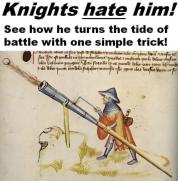Many people are moving to the RDS on the shotgun, myself included. The shotgun has always shot where the sights indicated, and this has been enough. You take it to the range, and it continues to do so, except that you constantly seem to be chasing your zero during sight-in. Finally it is zeroed, but when you test the cold-bore shot, it shoots high. The process begins again.
Or, you zero the gun, are happy, but note when it heats up, it begins shooting to 6 o-clock.
I fell into both camps above.
See, the shotgun barrel is typically (on combat type shotguns) retained with a magazine cap in the 6 o-clock location, which is of course affixed to the magazine tube, and the "ring" under the barrel is impinged against the cap, holding the assembly in place.
This works great as originally designed. However, during a course of fire (and shotguns heat up FAST!), the relatively thin barrel will expand. This places tension from the 6 o-clock direction on the barrel. With iron sights, the front sight will track with the barrel during this movement. With a receiver-only mounted optic, however, there is no front reference point in physical conjunction with the barrel, and shift can be noted.
Variables exist, such as how long is the mag tube, how thick is the barrel, and where is the anchor point in relation to muzzle/receiver respectively.
This is what I noted on my Benelli M1014. The first shot fired was from a cold, pristine barrel, and using the RDS. It was fired prone at 25 yards, and is seen top right. The second shot was fired directly thereafter, using the irons through the optic. Then, 25 field loads were run through the weapon as fast as humanly possible, and the 3rd shot was fired in the bottom right corner using the optic. Immediately thereafter, the irons were used to fire the 4th shot to the bottom left corner bull. Immediately after that, a 5th shot was taken usuing the RDS to confirm on the bottom right. You can see the results in this photo.




 Reply With Quote
Reply With Quote




